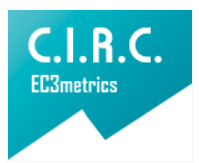Discourse, power and gender in children 4 to 5 years
Discurso, poder y género en niños y niñas de 4 a 5 años
Main Article Content
This article comes from results of the research “The speech as a mediator in the construction of power relations in boys and girls from 4-5 years, taking into account gender differences” whose
objective was to understand the role of speech in the construction of power relations, boys and girls from 4 to 5 years, taking into account gender differences. It is a hermeneutic study that
makes intratextual analysis of the discourses of boys and girls in school; contexts this being possible for the applicability of ethnographic research techniques. Discussion of the results can make explicit the role of oral discourse and non-verbal in the mediation of power relations in boys and girls from 4 to 5 years, which not only confirms the discourse abilities of the children but that it also makes tangible the power relationships woven into the action of discursar.
Downloads
Publication Facts
Reviewer profiles N/A
Author statements
Indexed in
- Academic society
- Bogotá: Corporación Universitaria Iberoamericana
- Publisher
- Bogotá: Corporación Universitaria Iberoamericana
Article Details
REFERENCIAS
Bolaños M., Lucy Mar (2006) “La formación del profesorado desde la perspectiva de género”. Colombia, Cali: Editorial Santiago de Cali.
Colombia, Congreso de la Republica (2006) “Ley 1098 de 2006 por medio de la cual se expide el código de la infancia y la adolescencia” art. 12.
Foucault, M. (1978). Vigilar y castigar. México: Editorial Siglo XXI. pp. 32, 218.
________. (1978). La verdad y las formas jurídicas. Pontificia Universidad Católica Río de Janeiro. Barcelona: Ed. Gedisa. p. 98.
________. (1985). Las palabras y las cosas. España: Planeta Agostini. p. 5.
________. (1992). Microfísica del Poder. Madrid: Ediciones de la Piqueta. p. 139.
________. (1997). Arqueología del Saber. XVIII ed. México: Ediciones siglo XXI.
________. (1999). Estética, Ética y Hermenéutica. Paidos Básica. Vol. III. pp. 137, 147.
Halliday, M. (1982). Exploraciones sobre las funciones del lenguaje. Barcelona: Editorial Médica Técnica, S.A.
Owens, R. (2003). Desarrollo del Leguaje. 5ª.ed. Madrid: Pearson Educación. p. 99.
Scott, J. (1986). “Gender and useful category of historical analysis”. American Historical Review, 91.
Scout, M. En Spender y Sarah. (1993). “Aprender a perder. Sexismo y educación”. Ediciones Paidós. Barcelona.
Sierra, P. Carmen. (2002). “El aprendizaje de los roles de género: de la inferioridad intelectual a la igualdad curricular. En Género y Educación. La Escuela coeducativa”. Editorial Grao. Barcelona.
Van Dijk, T. A. (2003). El discurso como estructura y proceso, Cap. 1. España: Editorial Gedisa, S.A.












